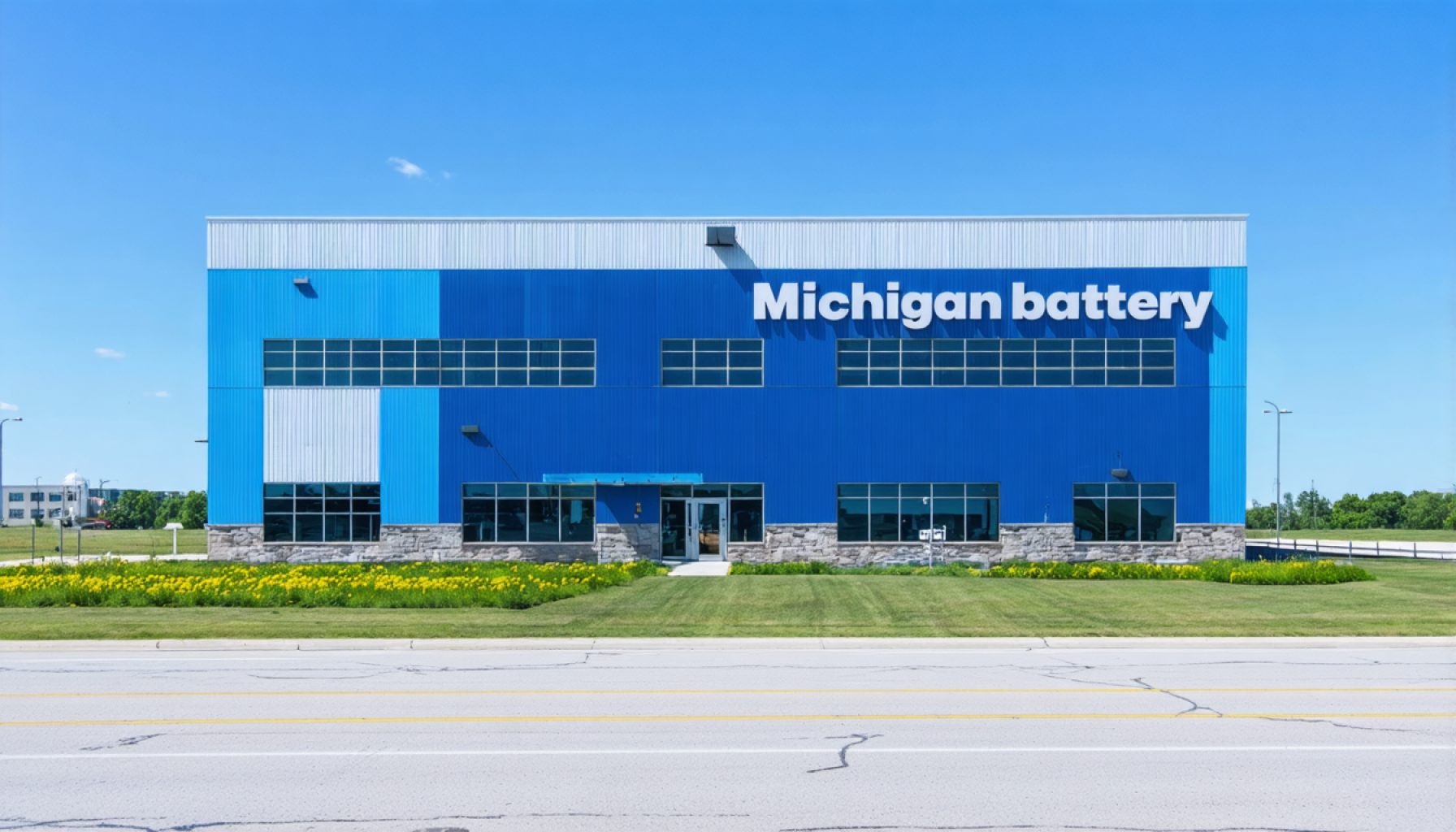- LG Energy Solution (LGES) has taken full control of the Ultium battery plant in Lansing, Michigan, marking a pivotal shift in the state’s battery manufacturing landscape.
- The nearly complete Ultium facility, with over $2 billion invested, is a key player in the electric vehicle supply chain and promises significant job creation, committing to 1,360 positions.
- This transition strengthens Michigan’s role as a leader in automotive innovation and aligns with global sustainability initiatives.
- Regional development is evident, with increased construction and skilled trade jobs boosting local employment and prosperity.
- Leaders like Bob Lee and Bob Trezise highlight the strategic investment and economic opportunities arising from LGES’s commitment to the region.
- The Lansing facility’s advancements reflect a broader impact on clean energy solutions, supporting a globally interconnected energy future.
The hum of industry echoes resoundingly through the plains of Lansing, Michigan, as the region stands on the cusp of a new era in automotive innovation. The Strategic Fund Board has given a rousing thumbs-up to a significant transition in Michigan’s burgeoning battery manufacturing landscape: LG Energy Solution (LGES) has taken full control of the Ultium battery plant, previously a joint enterprise with General Motors (GM). This decisive move comes as a promise not just to keep high-tech jobs grounded in Michigan soil, but also to fortify the state’s status as a powerhouse of innovation in the battery industry.
The Ultium plant, a sprawling testament to cutting-edge design and engineering, is now 98% complete. Workers and engineers have dedicated themselves with unrivaled precision to achieve this near-finish, driven by the charge of over $2 billion injected into its development. This facility is poised to be a cornerstone in the electric vehicle supply chain, a place where technology meets tangible change through every charged cell produced within its walls.
For Michigan, this is more than a business transaction; it is an assurance of employment perseverance. The solid commitment to 1,360 jobs guarantees that the region will not only maintain its current workforce but will also act as a magnet for further talent. The Lansing facility, now under the banner of LGES, expands beyond mere economics; it promises environmental and technological innovation aligning with the global push towards sustainability.
Amid the buzz of this transition, the landscape outside the plant has similarly transformed. The influx of construction and skilled trade jobs over the past 18 months is a narrative of growth, depicted by cranes that have become as commonplace as cornfields in the heartland. The project has emerged as a critical driver for regional employment, leaving a tapestry of community prosperity in its wake.
Bob Lee, an influential voice at the helm of LGES, expressed a buoyant admiration for the talented workforce breeding innovation in Lansing. For Lee, Michigan is a gold mine of opportunity, locked and brimming with potential—a place worth pouring resources into as it cultivates a battleground of battery technology. LGES’s decision to solidify ownership echoes this sentiment, signaling a formidable commitment to “onshoring” strategic endeavors.
With aspirations to diversify and strengthen the battery manufacturing ecosystem, Lansing’s authority figures echo sentiments of anticipation. Regional leaders recognize this transition as a beacon of elevated investment, sustainable job creation, and diversified technological advancements. Bob Trezise, championing the region’s economic prospects, emphasized the strategic and economic opportunities unfurling with LGES at the helm.
The promising prospect of production from Lansing’s sophisticated assembly line is much more than a local affair; it is a piece in the global puzzle of clean energy solutions. As the facility revs to life, the ripple effects will transcend borders, powering a new wave of innovative energy solutions crafted in the heart of America.
For Michigan, this is not just another chapter in its storied auto-industry history, but the prologue to a cleaner, electrified future, driven by the tireless energy of a community dedicated to progress and innovation.
This New Battery Plant is Transforming Michigan’s Future: Here’s How
Introduction
The shift of LG Energy Solution (LGES) taking full ownership of the Ultium battery plant in Lansing, Michigan marks a major milestone in the evolution of the state’s role in the electric vehicle industry. With its completion already near, the plant is poised to be a linchpin in both local employment and global clean energy initiatives.
Significance of the Transition
– Employment Impact: The takeover by LGES will ensure the creation and maintenance of 1,360 high-tech jobs, which not only secures economic stability for residents but also facilitates the attraction of new talent to the region. This aligns with broader trends of sustaining manufacturing jobs in the U.S., especially in tech-driven industries like EV batteries.
– Global Battery Market Trends: The energy storage market is rapidly expanding. According to Allied Market Research, the global electric vehicle battery market size was valued at $17.5 billion in 2018 and is projected to reach $107.9 billion by 2027. This move by LGES is strategic, reinforcing Michigan as a pivotal hub in the EV battery space.
Environmental and Technological Innovation
– Sustainability Efforts: Plants like Lansing’s are critical in the shift towards a sustainable future. The production of Ultium batteries, known for their high energy density and efficiency, plays a vital role in supporting cleaner transportation alternatives, crucial for combatting emissions and climate change.
– Technological Advancements: LGES’s investment inherently accelerates technological advancements in battery design, potentially reducing costs and improving efficiencies in electric vehicles.
Pressing Questions and Expert Insights
1. How will this transition affect local communities?
– Beyond job creation, the presence of a technologically advanced facility garners auxiliary benefits such as increased infrastructure investment and improved local economy.
2. What challenges might LGES face in this venture?
– Potential challenges could include supply chain disruptions, rapidly evolving technology necessitating continuous upgrades, and the need for sustainable practices in raw material sourcing.
3. Why is Michigan a strategic choice for LGES?
– Michigan’s deep-rooted automotive history provides a robust workforce familiar with manufacturing rigor and innovation, essential for cutting-edge battery production.
Comparisons and Limitations
– Pros: Enhanced job security, technological innovation, improved local economies, and Michigan’s reinforced status as an industry leader.
– Cons: Possible supply chain vulnerabilities, competition from international battery producers, and environmental concerns in sourcing raw materials.
Actionable Recommendations
– For Job Seekers: Consider enhancing skills in high-tech manufacturing and battery technology to take advantage of emerging opportunities in this sector.
– For Local Businesses: Align with this industrial growth by exploring partnerships or supplier opportunities with LGES and related technology firms.
– For Policymakers: Sustain efforts to bolster Michigan’s infrastructure and incentives for tech industries.
Conclusion
The Lansing plant’s transition under LGES is more than a local economic development. It mirrors a pivotal shift towards a cleaner, technologically advanced future. As industries globally strive to reduce carbon footprints, developments like these serve as benchmarks of progress and innovation.
For more insights on technology and industry innovations, visit the LG Energy Solution website.












